
16-11-2025 21:09
 Robin Isaksson
Robin Isaksson
Anyone recognize this acc. to pictures.? Found on

18-11-2025 13:59
Nogueira HéctorNovember 14, 2025 Brazuelo (León) SPAIN Hymenosc

17-11-2025 19:14
herman lambertApothécie discoïde 0.6 cm diam., orangeFace hym�

17-11-2025 21:57
Philippe PELLICIERBonjour,Récolté sur bois de feuillu mort dur, no

17-11-2025 21:46
Philippe PELLICIERBonjour,Récolté sur bois pourrissant de feuillu

14-11-2025 16:26
 Marian Jagers
Marian Jagers
Hello everyone, On dead wood of Cytisus scoparius

15-11-2025 23:22
Mario FilippaHello,this is what I think to be Hymenoscyphus mac

15-11-2025 20:25
 Riet van Oosten
Riet van Oosten
Hello, Found by Laurens van der Linde, Nov. 2025
Habitat: On overwintered, stromatised haws (fruit) of Crataegus monogyna, in litter or buried, in a mature glade, on a small hill, South Downs, England, late March with the first leaves of the host.
Associates: Lots of nematodes in the soil around the haws, one basidioma of Mycena acicula on a small twig, often with some herbaceous ground cover.
Apothecia: Measurements including full stipe length (3) 7-20 (30+) x 4-7 mm, n = 9, mean = 13 x 5 mm, Q = (0.8) 1.5-3.9 (4.2), mean Q = 2.3, goblet-shape, stipitate, cyathiform to cupulate and eventually +/- plane, deep to light brown, apparently darker with age, blackening when over mature, generally well-camouflaged amongst old upturned half-pits; receptacle and stipe with downy appearance; margin distinct, frosted-pruinose appearance, often in-rolled, with fringe of encrusted hairs/glassy processes?; disc concave, smooth appearance, more creamy colour; stipe 2-27+ x 1-1.5 mm, length depending on the depth that the haw is buried, when longer usually undulating more, appearance like the receptacle, often blackening near the base.
Storage and methods: Stored in a damp box for ~36 hours while still attached to haw, then stipe removed, cut in half, and slices taken from each side of the inside edge (not very effective as need more practise), mounted in water, some squashing later to separate the cells of the hymenium, IKI added to water mount, lots of bacteria in water mount.
Asci: Cylindrical, apex rounded to obtuse, croziers, IKI strongly bb – sclerotinia type, 1-1.5 seriate, one spore at apex, no inversely oriented spores observed.
- Living : ~130-190 x 9-12 um, pars sporifera ~20%, sub-biseriate when fully turgid, spores obliquely arranged, little to no apical thickening visible.
- Dead: ~7.5-9 um wide, pars sporifera > ~60%, uniseriate, apex more obtuse, distinct apical thickening when dead ~2.5-3 (4.8) um high.
Spores: Ellipsoid-obovate, often heteropolar with the apex rounded and the base more acute, occasionally more limoniform, rarely slightly curved, appearing binucleate with numerous medium-size shadowy LBs towards each pole and surrounding the nuclei, OCI 2-3, thick-walled, appear to have a perispore.
Measurements of mature vital spores in water mount: (11.4) 12.3-13.8 (14.1) × (6.3) 6.4-7.5 (7.6) µm, n = 21, mean = 12.9 × 7 µm, Q = (1.6) 1.7 - 2 (2.1), mean Q = 1.8.
Exudate: Orange-red, in subhymenium and medullary excip., appears more patchy in ectal excip., some clumping on surface; rhomboid crystals of varying sizes, hyaline, often in groups, apparently on the ectal excip.; appears to be a hyaline exudate or glassy processes around the marginal hairs.
Paraphyses: Cylindrical, apices rounded, slightly inflated to slight tapering - 3.5-4 (5) um wide, multi-septate, appear to have large hyaline guttules, possibly sensitive to trauma.
Ectal excipulum: Thin layer of hyphae externally with short hyphal tips/hairs protruding, then textura prismatica-globosa.
Marginal hairs: Like paraphyses, apical cell more inflated and capitate, sometimes irregularly inflated, protruding above the hymenium.
Subhymenium and medullary excipulum: Difficult to distinguish, textura intricata, separated from ectal excip. by broad band of horizontal hyphae.

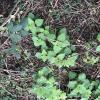
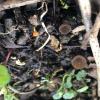
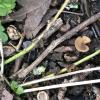
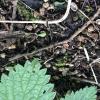
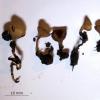
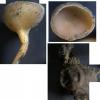
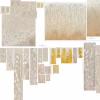
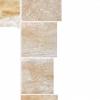
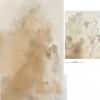
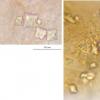
 Hymenium-0008.jpeg
Hymenium-0008.jpeg